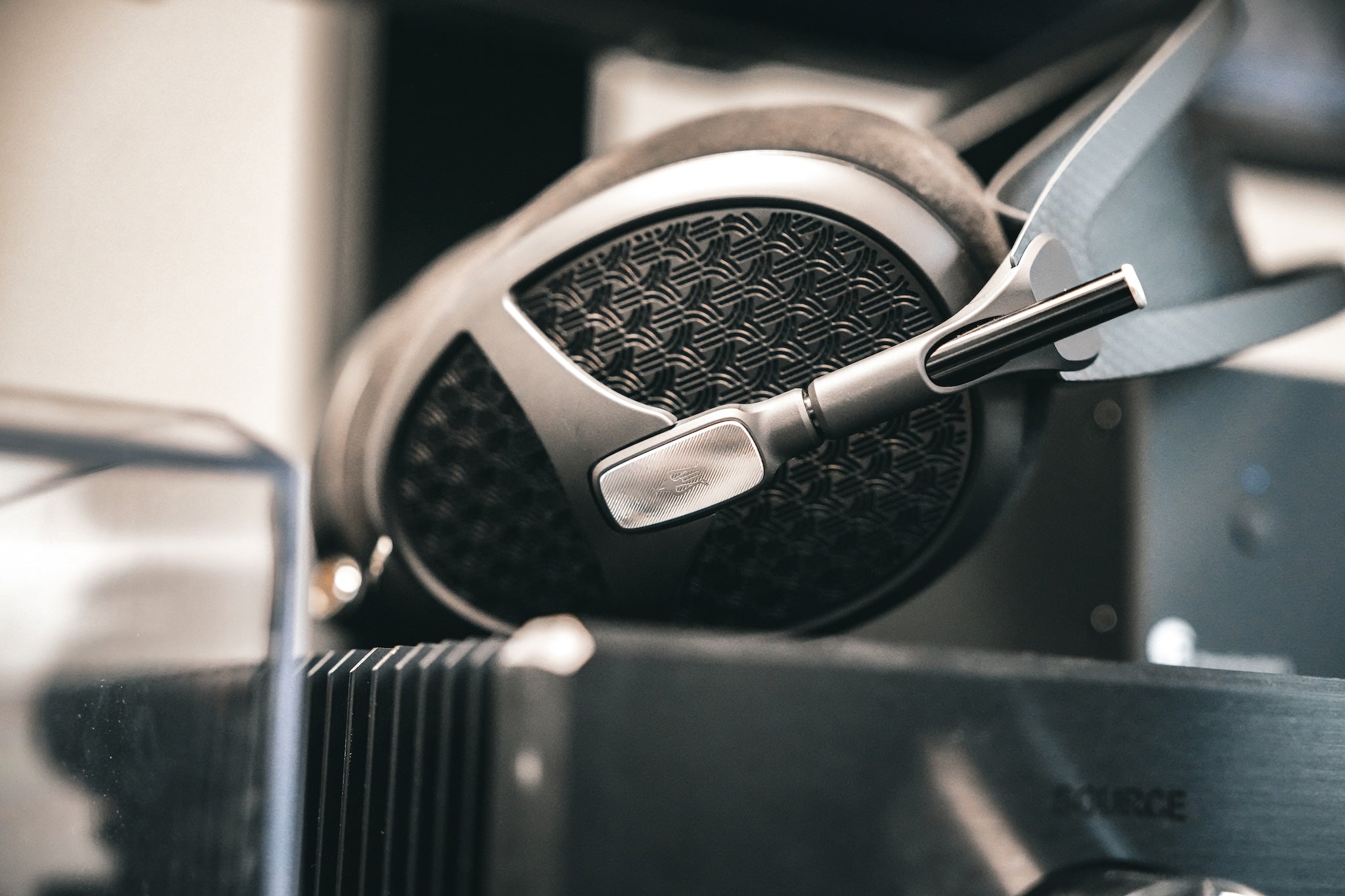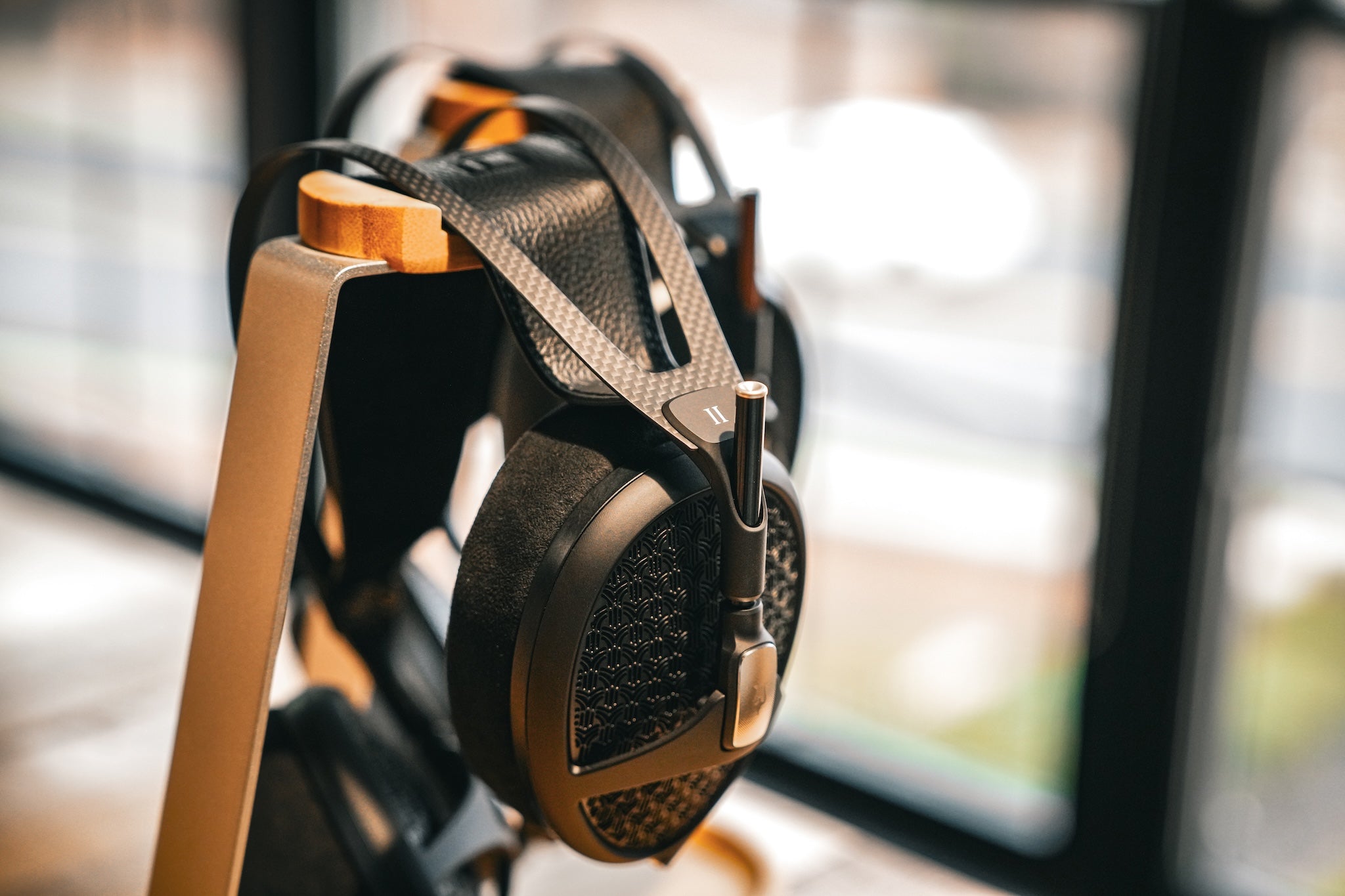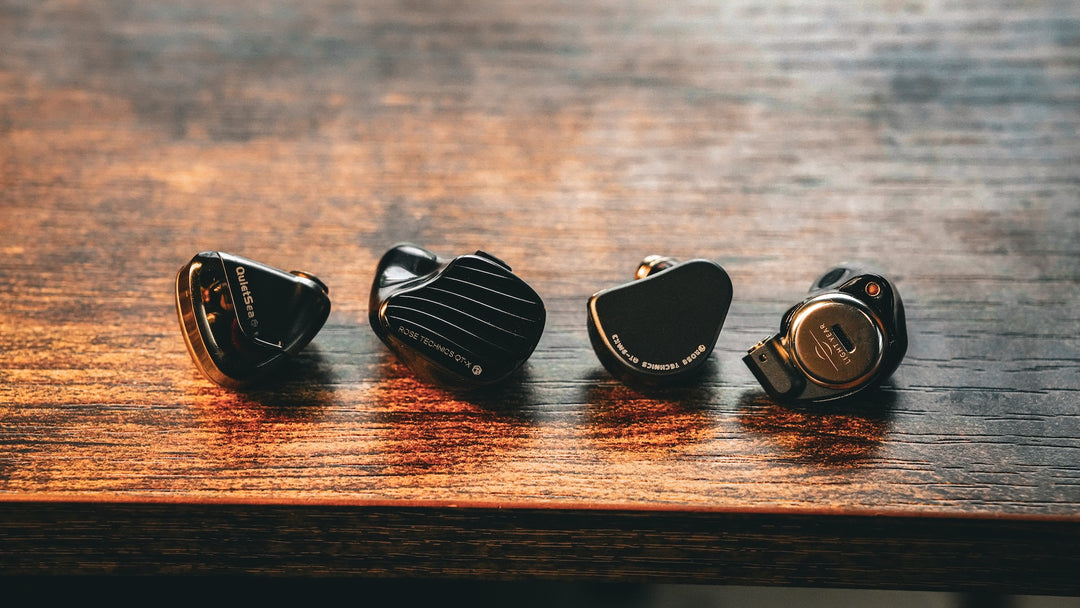When Meze released the Empyrean in 2018, it was a revelation in high-end headphones. The Rinaro hybrid isodynamic drivers it used combined the technical benefits of planar magnetic headphones with the more natural, organic feeling of dynamic drivers. Elite took things a step further, with a technical, resolving take on the design that traded some of the characteristic warmth of Empyrean for a higher level of detail. Now Empyrean II is here, and we're wondering who’s footsteps it will follow more closely? Can it deliver the technical performance of Elite with the lush, organic sound of Empyrean?
Build and Design
At first glance, not too much has changed since the original Empyrean. The color scheme is switched to a more staid black and silver, rather than the black and bronze of the original. There are also changes in the design of the grill. Other than cosmetic changes, the basic look, materials, and design remain the same, meaning the lightweight feeling, and “melt onto your head” comfort are just as good as they’ve always been. One piece that’s totally new is the earpads. Empyrean II is using a new hybrid ear pad dubbed the Duo, which are leather at the start and switch to Alcantara halfway to your ears. The inside of the earpad is also all fenestrated leather, essentially combining the three key earpad technologies into one pad.
The package takes after the updated design Meze launched with the Elite Tungsten. It’s a smaller box, and the cable is packaged separately, giving you a choice between Meze’s premium copper and silver cables when you purchase the headphones. Between the packaging, the build, and other characteristics, Empyrean II seems to be saying “If it ain’t broke, don’t fix it,” retaining the strong aesthetic, great build, and comfort of the original. This leaves us with the question, was there anything to fix in the sound?
Sound
While the original Empyrean remains a favorite for lovers of rock, alternative, jazz, and hip hop, many feel that its technical capabilities aren’t as strong as other headphones around the same price point, and that its warmer tuning lacks the accuracy and clarity that listeners should demand for $3000. Empyrean II doesn’t see the warmth and color of the original Empyrean as something to be fixed, so much as it sees it as a starting point for what comes next.
Empyrean II aims for a higher degree of accuracy in the tuning, delivering a natural timbre, with a lush, organic sound. That lush sound combines with deep, hard hitting bass for a huge sense of body and weight. Within that thickness, there’s still a surprising amount of clarity, and strong detail that doesn’t feel compromised by Empyrean II’s inviting warmth. It’s all rounded off, by a well defined, but still smooth top end, with good fundamentals in the treble, along with a nice sense of air in the upper extension.
There are a few specific elements to the tuning that really define Empyrean II’s character. The warm, intimate presentation of vocals was a highlight of the original Empyrean, and Empyrean II has a similar delivery of warm, natural vocals. The vocal tuning coincides with a sense of richness and emotion in the presentation of stringed instruments. Whether guitars, violins, or cello, Empyrean II offers an immersive, emotional sense of realism and weight. The other piece is the bass, which is just a little bit more elevated than your average flagship headphone, making Empyrean II great for genres like metal and hip hop that don’t always play well with flagship HiFi gear.
On Hiromi’s “Wanderer,” it’s hard to tell which element Empyrean II does the best job of highlighting. There’s the amazing playing dynamics from the piano – loaded with emotion – the hard hitting impact and vivid imaging of the drums, along with bass that’s presented with a lifelike texture. The bass stands out just a little bit extra in the mix, laying the foundation with a highly textured, impactful presence. Empyrean II’s treble expertly balances the snap of the snare and delicate piano lines, along with both the fast attack and natural decay of the deft cymbal work.
Devin Townsend’s “Genesis” is an incredible all around demonstration of what Empyrean II does well. It demonstrates speed and impact, but also manages a lot of potential harsh elements really well to deliver a non-fatiguing experience. Guitars have massive weight and body, vocals are well balanced, with Empyrean II handling a range of clean, rough, and harsh vocals while revealing the intricate characteristics of a host of different musical genres that the song shifts between. The macro-dynamics — managing the intensity and volume from easy listening to death metal – are a huge part of the listening experience, and Empyrean II captures them brilliantly.
For up close, intimate vocals, it doesn’t get much better than “Don’t Know Why” by Norah Jones. With Empyrean II you’re practically sharing the piano with Jones, with the band perfectly spaced around you. The bass and kick drum are nicely blended, adding a low but colorful impact just underneath the vocals. The guitar is just off to your left, offering subtle highlights, with an inviting warmth that doesn’t take away from the clear definition in the clean guitar playing. I’ve heard this song on a dozen different sets of headphones, and Empyrean II lets you just melt into the song better than any other headphones I’ve heard.
The moment Kanye West’s “POWER” starts you know you’re going to be in for a wild ride. The opening vocal sample reverbates around Empyrean II’s three-dimensional soundstage, and when Kanye starts his aggressive bars, he’s right in your face. The vocals cut through the mix, but the varied elements – from chanting vocals to 808s to the King Crimson sample – each stand out in this eclectic mix, while also blending to support the lead vocal. Empyrean II makes a case for it being top tier for hip hop with hard hitting bass, excellent separation of background elements with a diverse set of samples, and clear, engaging vocals.
Comparison - Meze Empyrean ($2999), Meze Elite ($3999)
While there are a number of potential comparisons to be made with other top tier headphones, I think the biggest question on most people’s minds is how exactly Empyrean II compares to the original Meze Empyrean and Meze Elite. Empyrean II is replacing the original at the same $3000 price point, but with its updates and improvements, how far off is it from Elite?
As we’ve already mentioned, compared with the original, Empyrean II turns the tuning more neutral, while maintaining some of the original’s tuning characteristics. Another strong comparison here is the Meze 109 Pro, which many people saw as being a more neutral take on the Empyrean, and Empyrean II’s tuning lands in a similar space as 109 Pro, just with a little bit more bass and a touch more warmth, while the technical capabilities are clearly a big step up. Other than the tweaks to the tuning, Empyrean II presented a wider soundstage than the original along with more three-dimensional imaging.
While the general tuning is closer to Elite, Elite still maintains a clear technical advantage, offering the most holographic presentation of the three, with the strongest resolution, and the best insight into the microdetails in expertly engineered recordings. Of course, there’s still a small cost there, and Empyrean II has stronger bass extension and more of the engaging emotional delivery that defined the original Empyrean.
So the answer to our question of “Which is the best?” or “Which one should I buy?” ends up being somewhere in the nexus of price, performance and tuning preference. I’m sure a few folks will still prefer the more colored sound of the original Empyrean, but I think it’s safe to say that Empyrean II is an improvement by most measurable standards. Compared with Elite, if you find yourself listening to more symphonic compositions, classical, and film scores, the imaging and resolution of Elite makes it the stronger pick, but if you listen to more Beastie Boys than Beethoven, Empyrean II’s extra dose of fun is likely to win you over.
The Bottom Line
Empyrean found its way into a lot of headphone collections with its combination of craftsmanship, comfort, and a unique sound. Empyrean II improves on the original, with a more accurate, versatile sound, but maintains the core Empyrean identity making Empyrean II a true flagship for those who are happy to trade a little bit of accuracy for a little more fun.











